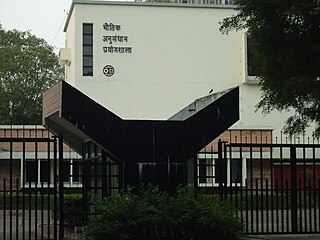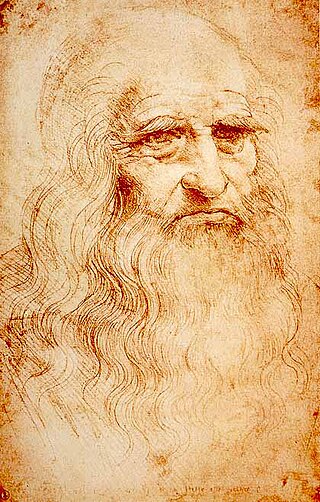
X-ray astronomy is an observational branch of astronomy which deals with the study of X-ray observation and detection from astronomical objects. X-radiation is absorbed by the Earth's atmosphere, so instruments to detect X-rays must be taken to high altitude by balloons, sounding rockets, and satellites. X-ray astronomy uses a type of space telescope that can see x-ray radiation which standard optical telescopes, such as the Mauna Kea Observatories, cannot.

Cosmic rays or astroparticles are high-energy particles or clusters of particles that move through space at nearly the speed of light. They originate from the Sun, from outside of the Solar System in our own galaxy, and from distant galaxies. Upon impact with Earth's atmosphere, cosmic rays produce showers of secondary particles, some of which reach the surface, although the bulk are deflected off into space by the magnetosphere or the heliosphere.

Riccardo Giacconi was an Italian-American Nobel Prize-winning astrophysicist who laid down the foundations of X-ray astronomy. He was a professor at the Johns Hopkins University.

The Aerobee rocket was one of the United States' most produced and productive sounding rockets. Developed by the Aerojet Corporation, the Aerobee was designed to combine the altitude and launching capability of the V-2 with the cost effectiveness and mass production of the WAC Corporal. More than 1000 Aerobees were launched between 1947 and 1985, returning vast amounts of astronomical, physical, aeronomical, and biomedical data.

Bruno Benedetto Rossi was an Italian experimental physicist. He made major contributions to particle physics and the study of cosmic rays. A 1927 graduate of the University of Bologna, he became interested in cosmic rays. To study them, he invented an improved electronic coincidence circuit, and travelled to Eritrea to conduct experiments that showed that cosmic ray intensity from the West was significantly larger than that from the East.

NASA's series of Great Observatories satellites are four large, powerful space-based astronomical telescopes launched between 1990 and 2003. They were built with different technology to examine specific wavelength/energy regions of the electromagnetic spectrum: gamma rays, X-rays, visible and ultraviolet light, and infrared light.
Raymond Vahan Damadian was an American physician, medical researcher, and inventor of the first nuclear magnetic resonance (NMR) scanning machine.

Backscatter X-ray is an advanced X-ray imaging technology. Traditional X-ray machines detect hard and soft materials by the variation in x-ray intensity transmitted through the target. In contrast, backscatter X-ray detects the radiation that reflects from the target. It has potential applications where less-destructive examination is required, and can operate even if only one side of the target is available for examination.
Scorpius X-1 is an X-ray source located roughly 9000 light years away in the constellation Scorpius. Scorpius X-1 was the first extrasolar X-ray source discovered, and, aside from the Sun, it is the strongest apparent non-transient source of X-rays in the sky. The X-ray flux varies day-to-day, and is associated with an optically visible star, V818 Scorpii, that has an apparent magnitude which fluctuates between 12-13.

The Physical Research Laboratory is a National Research Institute for space and allied sciences, supported mainly by Department of Space, Government of India. This research laboratory has ongoing research programmes in astronomy and astrophysics, atmospheric sciences and aeronomy, planetary and geosciences, Earth sciences, Solar System studies and theoretical physics. It also manages the Udaipur Solar Observatory and Mount Abu InfraRed Observatory. The PRL is located in Ahmedabad.
The UCL Mullard Space Science Laboratory (MSSL) is the United Kingdom's largest university space research group. MSSL is part of the Department of Space and Climate Physics at University College London (UCL), one of the first universities in the world to conduct space research. Since its establishment, MSSL has participated in 35 satellite missions, 10 of which are currently in operation, and in over 200 sounding rocket experiments.
Herbert Gursky was the Superintendent of the Naval Research Laboratory's Space Science Division and Chief Scientist of the E.O. Hulburt Center for Space Research.

A full-body scanner is a device that detects objects on or inside a person's body for security screening purposes, without physically removing clothes or making physical contact. Unlike metal detectors, full-body scanners can detect non-metal objects, which became an increasing concern after various airliner bombing attempts in the 2000s. Some scanners can also detect swallowed items or items hidden in the body cavities of a person. Starting in 2007, full-body scanners started supplementing metal detectors at airports and train stations in many countries.

A millimeter wave scanner is a whole-body imaging device used for detecting objects concealed underneath a person’s clothing using a form of electromagnetic radiation. Typical uses for this technology include detection of items for commercial loss prevention, smuggling, and screening for weapons at government buildings and airport security checkpoints.

Rapiscan Systems is an American privately held company that specialises in walk-through metal detectors and X-ray machines for screening airport luggage and cargo. The company is owned by OSI Systems.

Science and technology in Italy has a long presence, from the Roman era and the Renaissance. Through the centuries, Italy has advanced the scientific community which produced many significant inventions and discoveries in biology, physics, chemistry, mathematics, astronomy, and the other sciences. In 2019, Italy was the 6th world producer of scientific articles publishing more than 155,000 documents. From 1996 to 2000, it published a total of 2 million scientific articles. Italy was ranked 28th in the Global Innovation Index in 2022.

OSO 3, or Third Orbiting Solar Observatory was launched on March 8, 1967, into a nearly circular orbit of mean altitude 550 km, inclined at 33° to the equatorial plane. Its on-board tape recorder failed on June 28, 1968, allowing only the acquisition of sparse real-time data during station passes thereafter; the last data were received on November 10, 1969. OSO 3 reentered the Earth's atmosphere and burned up on April 4, 1982.

The history of X-ray astronomy begins in the 1920s, with interest in short wave communications for the U.S. Navy. This was soon followed by extensive study of the earth's ionosphere. By 1927, interest in the detection of X-ray and ultraviolet (UV) radiation at high altitudes inspired researchers to launch Goddard's rockets into the upper atmosphere to support theoretical studies and data gathering. The first successful rocket flight equipped with instrumentation able to detect solar ultraviolet radiation occurred in 1946. X-ray solar studies began in 1949. By 1973 a solar instrument package orbited on Skylab providing significant solar data.
The New York City Police Department is reported to have a number of military-grade X-ray vans that contain X-ray equipment for inspecting vehicles.













